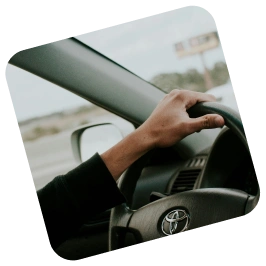Broken cars or non-running cars, whether due to age, mechanical issues, or accident damage, still have value. Instead of letting your broken car or non-running car collect dust in your driveway, consider selling it! While it seems like a lot of work, it’s entirely doable with the right approach.
Learn how to turn what seems like a burden into a profitable opportunity with this guide.

What is a non-running car?
Non-running cars are vehicles that can’t operate or move under their own power. This can stem from various issues, ranging from minor problems like a dead battery or a faulty starter motor to more serious issues such as engine failure. Additionally, a faulty car, which may have various defects, also falls under this category.
Several factors contribute to a car being non-running:
- Mechanical failures, such as engine damage, transmission issues (evidenced by gear problems, clutch failures, and or fluid leaks), and fuel system malfunctions
- Electrical issues like faulty wiring, blown fuses, or sensor failures that disrupt the car’s electrical systems
- Structural damage from collisions, frame misalignment, or suspension damage that compromises the car’s integrity
- Age-related wear and tear, inadequate maintenance, and ageing components leading to mechanical breakdowns
- Environmental damage, such as flood or fire damage, severely affects the vehicle’s operational capability.
Put simply, if a car cannot start or be safely operated due to these issues, it’s classified as non-running. While some problems can be repaired to restore the car’s functionality, others render it unusable. In such cases, selling the car for parts or scrap metal becomes the practical option.
Should I fix my non-running car?
Before selling, consider your car’s market value in its current state, the cost of repairs, and whether it can be made roadworthy again.
If you’re thinking about fixing your non-running car, your first step should be consulting a qualified mechanic for a repair estimate. If it only needs minor fixes like engine tuning or a new battery, it might be quick and affordable to get it running. However, if the repair costs are too high to recoup through a sale, it’s better to sell it as a non-runner.
If your car has been written off by an insurer, you should understand its category to determine if it can be made roadworthy again. Insurance write offs classify cars into different categories based on their damage, affecting your options for selling or repairing the vehicle.
- Category A or B: These cars are only fit for crushing or parts, so your options are selling for scrap or parts.
- Category S: The vehicle has structural damage and needs professional, expensive repairs. If you can’t make a profit after repairs, consider selling or scrapping it.
- Category N: The car hasn’t sustained structural damage but may not be driveable. Get expert advice before deciding to repair or sell it.
Overall, fixing a non-running car makes sense only when the repair costs are low enough that you can recoup them when selling the car afterwards. Or you may decide to keep it, it’s your choice.
Categories of Damage
When it comes to selling a damaged car, understanding the different categories of damage is crucial. The Association of British Insurers (ABI) classifies damaged vehicles into four main groups:
- Category A: Scrap - These vehicles are not suitable for repair and are only worth their scrap value. They must be completely destroyed and cannot be used for parts.
- Category B: Break - These cars are also not suitable for repair, but some of their parts can be salvaged and reused. The body shell must be crushed, but other components can be sold.
- Category S: Structural - Vehicles in this category have sustained damage to their structural frame or chassis but can still be repaired. However, the repairs are often extensive and costly.
- Category N: Non-Structural - These cars have damage that does not affect their structural integrity, such as cosmetic damage. They can be repaired more easily and are often more appealing to buyers.
Understanding which category your damaged car falls into can help you determine its value and the best way to sell it. Whether it’s for parts, repair, or scrap, knowing the category will guide your next steps.
Where can I sell my non-running car?

If you’ve decided to sell your non-running car, it’s a good idea to check an estimate of its value online. While you won’t know the exact amount until you visit the buyer, having an estimate beforehand gives you a good starting point. Remember that the value of non-running cars is much lower than running vehicles, so don’t get your hopes up.
Next, you’ll need to choose where to sell it. There are several options for non-running cars: selling to a private individual through a private sale, which can take longer and may not be as efficient; selling to a dealership; or using a specialized service that buys damaged cars quickly.
Auction
Selling your car at an auction is a viable option, but since it can’t be driven, a salvage auction is typically more suitable than a traditional car auction.
Salvage auctions specialise in damaged or non-operational vehicles. You can expect to pay a seller’s fee, which can vary but typically ranges from £50 to £100 or more, depending on the auction house. Transporting your non-runner to the auction house will also incur costs, ranging from £100 to £200 or more, depending on the distance.
You can get a few hundred pounds here, but it really depends on the specifics of your car and the current market conditions. However, by comparing offers from multiple buyers, you can ensure you receive the best price for your vehicle.
Private sale
Selling to a private individual is more challenging for a non-runner because the buyer will need to arrange transportation. However, being transparent about the car’s condition can attract interested buyers who are willing to take on the project.
Naturally, non-running cars sold privately go for lower prices than operational ones. Plus, the selling price will vary widely. On average, you might expect to receive between £100 to £500, depending on its salvageability and the buyer’s interest.
One trick for private sellers is tapping into niche groups. If you have a rare car, enthusiasts in these groups may be eager to buy it, sometimes even willing to pay more for it than a typical buyer would. Joining online forums and social media groups or attending car club events specific to your car’s make and model will help you connect with these potential buyers who value what your car has to offer.
Dealership
Some used car dealerships will consider buying your non-running or damaged vehicle, especially if it’s potentially fixable. They might see it as an opportunity to repair and resell it, leveraging their in-house mechanics.
Unless you’re very pressed for time and money, never sell your car at the first place you visit. Expect to shop around to find a dealership willing to make an offer. Just take note of how far the car needs to be towed so that transportation costs don’t eat into how much you get.
Dealerships typically offer lower prices than private buyers because they need to cover repair costs and still make a profit. Estimates for selling a non-runner to a dealership range from £50 to £300, sometimes more.
Scrap
Selling your car for scrap should be considered as a last resort. You probably also don’t want to reduce your car to mere materials if there’s a chance it can be salvaged or repaired. But sometimes, there really isn’t any other option.
The value of scrap cars fluctuates with metal prices and depends on the size and weight of the vehicle. Scrap dealers assess its value based on its recyclable materials like plastics and fabrics, too. For example, cars with intact and valuable interior components like high-quality upholstery or intact plastic trim pieces go for a higher price. By breaking down the car and selling its individual parts, you can potentially make more money compared to selling it as a whole.
Note that location impacts the value of a scrap car, too. For example, selling your car in a busy city like London, where competition among scrapyards is high, leads to a better offer than in a remote area of Scotland where scrap metal prices are lower since there are fewer scrapyards and lower demand. At the same time, scrap metal prices could be higher in remote areas due to logistics, so you’ll need actual quotes to compare.
How to Sell an Accident Damaged Car
Selling an accident damaged car can be challenging, but with the right approach, you can ensure you get a fair price. Here are some steps to help you through the process:
- Get a Detailed Assessment of the Damage: Have a professional mechanic or assessor evaluate the damage to your car and provide a detailed report. This will give you a clear understanding of the car’s condition and repair costs.
- Gather Evidence: Take photos and videos of the damage from multiple angles. Keep any receipts or records of repairs. This documentation will be crucial when discussing the car’s condition with potential buyers.
- Research the Market: Look at similar cars that have been sold with comparable damage. This will help you determine a fair market value for your accident damaged car.
- Be Honest and Transparent: Disclose the damage to potential buyers and provide them with the assessment report and evidence. Transparency builds trust and can lead to a smoother sale.
- Consider Selling to a Specialist: Companies that specialize in buying damaged cars may offer you a better price than a private buyer. They have the expertise to assess the car’s value accurately and may provide a hassle-free selling experience.
By following these steps, you can navigate the process of selling your accident damaged car and ensure you receive a fair price.
What Paperwork Do I Need When Selling a Non-Running Car?
When selling a non-running car, having the right paperwork is essential to ensure a smooth transaction. Here’s what you’ll need:
- V5C Logbook: This is the registration document for your car. You’ll need to transfer it to the buyer to officially change ownership.
- Service History: If your car has been serviced regularly, provide the service history to the buyer. This can add value to your non-running car by showing it was well-maintained.
- MOT History: If your car has a valid MOT, include the MOT certificate. Even if the MOT has expired, providing the history can be useful.
- Repair Records: If your car has undergone any repairs, provide records of these to the buyer. This transparency can help in negotiating a fair price.
- Proof of Ownership: You’ll need to provide proof of ownership, such as a bill of sale or a receipt, to show that you have the right to sell the car.
Additionally, it’s a good idea to have a written description of the car’s condition, including any damage or faults. This can help protect you from any potential disputes with the buyer and ensure a clear understanding of the car’s condition.
By having all the necessary paperwork in order, you can make the process of selling your non-running car as smooth and hassle-free as possible.
Sell your car safely and hassle free with Motorways
If your car isn’t working and is beyond repair, we can help it serve you one last time. Motorway collaborates with a specialised scrap buyer who purchases non-running vehicles to get you the best deal possible. Here’s how the process works:
- First, you get an instant quote by providing details about your vehicle through the Motorway’s platform.
- Once you’ve entered your vehicle into an online auction, verified dealers submit their best offers.
- You then receive the highest offer from these dealers.
- If you accept the offer, Motorway will arrange a free collection of your vehicle and guarantee you receive instant payment via bank transfer.
This streamlined process makes selling non-running vehicles hassle-free and convenient. Get started today and turn your non-runner into cash!
Final words
Having a car that doesn’t run provides more options than you might think. If the car is fairly new and in good condition, you could sell it to an auction or dealership. Even if it’s completely non-functional but a popular model, you can sell its working parts. If there aren’t any salvageable working parts left, scrapping the vehicle for parts or recycling the materials becomes the most practical choice. The fantastic benefits of selling a non-running car include significant savings and time efficiency, making it a worthwhile consideration.
The main points to remember when selling a non-running car are to do thorough research, be transparent about its condition, and have all the necessary paperwork ready. With some preparation, you can get a reasonable price.
Table of Contents








